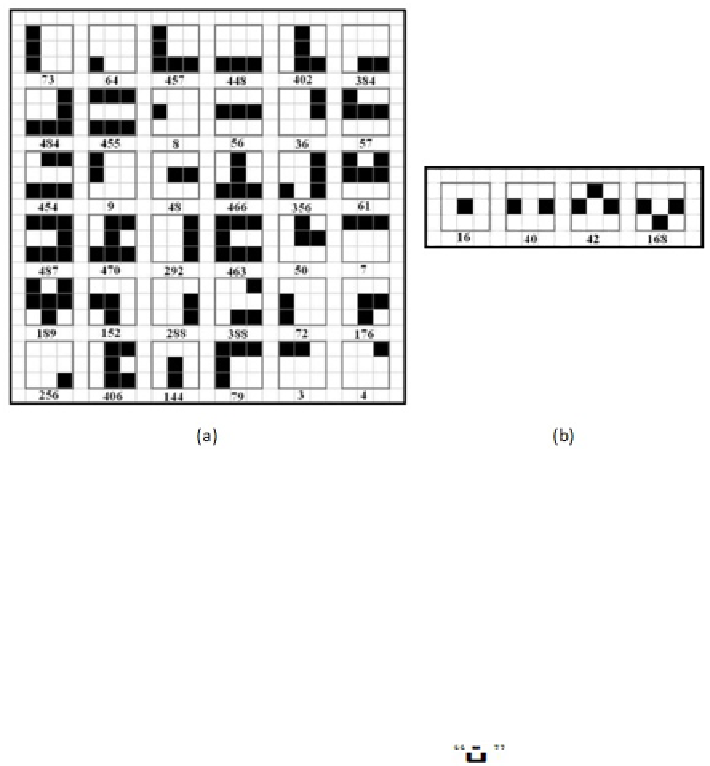Image Processing Reference
In-Depth Information
Fig. 12.6
All 114 Ma'qeli script patterns are generated by means of (a) 36 body rules and (b)
four dot rules. The rule's number, which is written below each 3
×
3-cells, presents the sum of
binary value of filled cells.
letter (Initial = 1, Medial = 2, Final = 3, and Isolated = 4) and other digit(s) shows
the alphabet placement of that letter.
The Start and the End rules are presented in the form of ij, where i (i = 0, 1,
...
,
8) shows the ith tessellate in the letter block, and j (j = 0, 1,
8) shows the jth
cell in the ith tessellate. In fact, these rules regulate the initial and final cells of a
block location such that each letter places on the base line. As an example, Table 1
tabulates 12 rules of a block for producing the letter . The overall procedure
of generating a string using Ma'qeli script is as follows below:
...
12.3.3
Holy Word Formation Using L-Systems
Word formation using L-Systems is a kind of turtle graphics in which there are three
attributes including (I) a location, (II) an orientation, and (III) a pen, itself having at-
tributes such as color, width, and up versus down. The turtle moves with commands
that are relative to its position, such as "turn left 90 degrees". The pen carried by
the turtle can also be controlled, by enabling it, setting its color, or setting its width.
From these building blocks one can build more complex shapes like squares, trian-
gles, circles and other composite figures. Combined with control flow, procedures,
and recursion, the idea of turtle graphics is also useful in a Lindenmayer system for
generating words, as we take it in hand.
L-system grammars are very similar to the semi-Thue grammar. L-systems are
now commonly known as parametric L-systems, defined as a tuple G = (V ,
ω
,P),

Search WWH ::

Custom Search